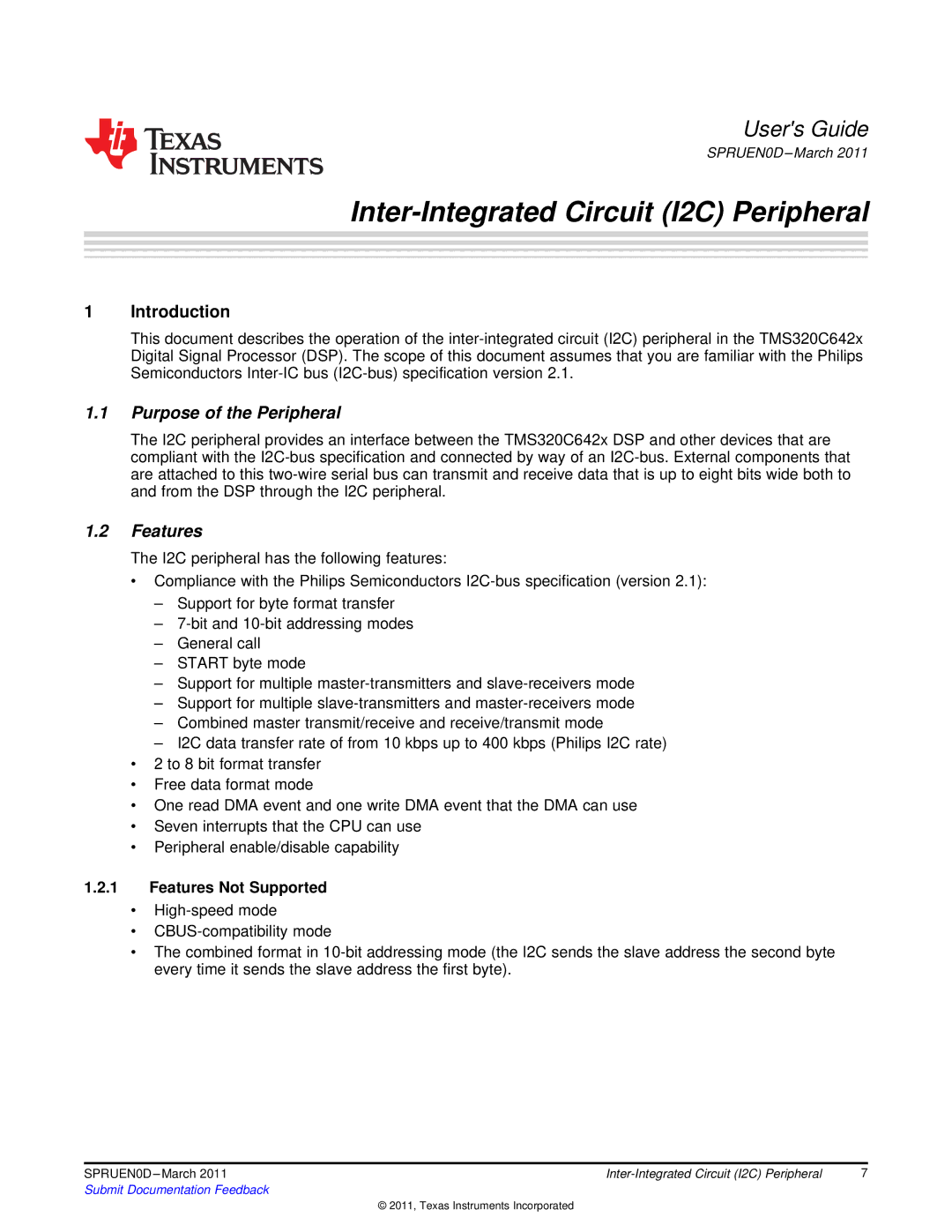
User's Guide
SPRUEN0D – March 2011
Inter-Integrated Circuit (I2C) Peripheral
1Introduction
This document describes the operation of the
1.1Purpose of the Peripheral
The I2C peripheral provides an interface between the TMS320C642x DSP and other devices that are compliant with the
1.2Features
The I2C peripheral has the following features:
•Compliance with the Philips Semiconductors
–Support for byte format transfer
–
–General call
–START byte mode
–Support for multiple
–Support for multiple
–Combined master transmit/receive and receive/transmit mode
–I2C data transfer rate of from 10 kbps up to 400 kbps (Philips I2C rate)
•2 to 8 bit format transfer
•Free data format mode
•One read DMA event and one write DMA event that the DMA can use
•Seven interrupts that the CPU can use
•Peripheral enable/disable capability
1.2.1Features Not Supported
•
•
•The combined format in
SPRUEN0D | 7 | |
Submit Documentation Feedback |
|
|
© 2011, Texas Instruments Incorporated
